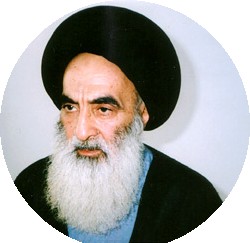 The Hauz -e-Kausar–By: Ayatullah Shaheed Sayyid Abdul Husain Dastghaib
The Hauz -e-Kausar–By: Ayatullah Shaheed Sayyid Abdul Husain Dastghaib
Inna Aatainaa Kal Kausar (Surah Kausar 108:1)
One of the Islamic matters about which there is specific mention in the Holy Quran and so also in both Shia and Sunni narrations is Hauz-e-Kausar: “That abundant good which has been granted by the Lord of the Universe to His Messenger Muhammad Mustafa (s.a.w.s.).
The length of this cistern, as has been earlier mentioned, is equal to the distance from Sanaa (Yemen) to Basra. Cups equal to the number of stars in the sky will be on the its bank which will be filled by the hands to sky will be filled with the hands of Hoorul Ayn (fairies) and will be served to the Momin (the Faithful). These cups will be of various kinds; some will be made of heavenly silver and some of billor (flint glass).
Hauz-e-Kausar Heavenly Springs Of Milk And Honey
According to some narrations, this Hauz or cistern will be divided into three parts: Anhhar…Meaning: Heavenly wine, milk and honey will be flowing in streams.
Anyway, it is certain that the contents of this cistern of the Holy Prophet will be sweeter than honey and cooler than ice. Subhaanallah (praise be to God). What to talk of the cistern the drinking from which will be very pleasing and after drinking which one will never be thirsty.
Wa Isqana… (Nudbaa Prayer)
Shaykh Shoostari has, in Khasaais, and other hadith writers too, have in their works, mentioned that the distributors of Hauz-e-Kausar will be the Holy Prophet (s.a.w.s.) and the Amirul Momineen (a.s.) and that every momin (faithful) will get the Aab-e-Kausar (water of Kausar).
Kausar Becomes Happy With The Mourners Of Husain (a.s.)
The mourners of Husain (a.s.) have one additional distinction with respect of Hauz-e-Kausar. Imam Sadiq (a.s) says: Inanl Kausar…Husain. The Imam (a.s.) says that the mourners of Husain (a.s.) will on arrival at the Huaz-e-Kausar make the Hauz happy.
For obtaining more details please refer to the first part of the late Khuyabani’s book Muharram Wa Waqqaiyal Aiyaam.
The Ears Acquainted With The Heavenly Song
The Holy Prophet (s.a.w.s.) has said: The Lord of the universe has created a thousand tress around this Huaz. Every tree has three hundred and sixty branches full of leaves and every leaf giver out (releases) different songs. If you want to hear those sweet and pleasing sounds, then you must make your ears worthy of it, that is, you should not lend your ears to worldly music and the non-sense accompany it.
Appearance Of Muhammad And Aale Muhammad (a.s.)
Saahibe Livaa…
One of the stations of Qiyamat will also be that of appearance of the grandeur and greatness of Muhammad and the progeny of Muhammad (a.s.).
Livaa-e-hamd means the flag the high spay of which will be equal to the distance covered in a thousand year long journey. There will be three parts in that flag and each one of them will have a length equal to the distance between the east and west. It is mentioned in another narration Aazamu…meaning: Every part of that flag will be bigger than the sun and the moon. On one of them will be written Bismillaahirrehmaanirraheem and on another second AL Hamdu Lillaah Rabbil Aalameen and on the third Laa Ilaah Illallaah Muhammadur Rasoolullaah.
All the messengers and prophets and pious and righteous people and the faithful will camp beneath that flag the bearer of which will be the conqueror of Khaibar Amirul Momineen Ali bin Abi Talib (a.s.).
The Minber (Pulpit) Of Wasilah (Medium)
Wa Qarrub Ilaihi Waselah
In the aforesaid words of the prayer, ‘Wasilah’ means that particular pulpit of light which will be established in the field of Mahshar. It will have one thousand staircases and every staircases will be cemented with another by Zamarrud (emerald), Zabarjad (chrysolite), Yaaqoot (ruby) and gold and all these precious things will be from paradise. The top most stair (Arsha-e-Minber) will be reserved for the last Prophet Muhammad (s.a.w.s.) and the one below it will be for the immediate legatee of the Holy Prophet Janab Amirul Momineen Ali (a.s.) and those lower than them those will be for Ibrahim (a.s.) and other messengers and legatees according to their ranks.


